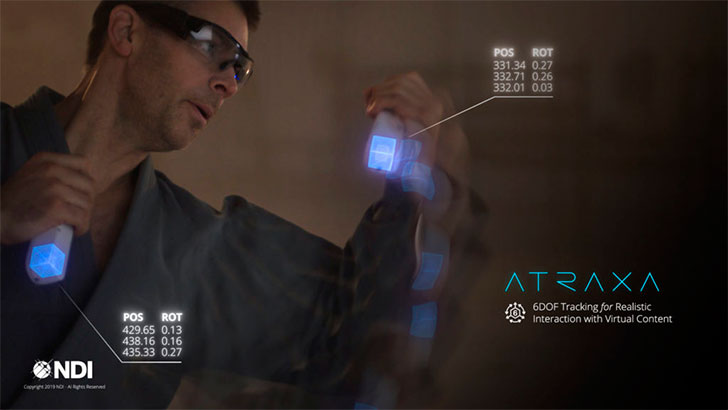The NDI solution eliminates occlusion problems that other systems have.
NDI he was showing at CES his electromagnetic technology to create occlusion-free 6dof controllers, which is named after Atraxa. The NDI solution offers absolute positioning and low latency, and does not require the use of cameras or sensors limited in their coverage by the viewing angle, as is the case with optical or ultrasonic solutions. For its operation, it uses small and low consumption modules that are integrated into the different peripherals and a receiver that is placed in the viewer for the management of the different modules.
“Atraxa solves a unique tracking challenge. It enables RX equipment manufacturers to accurately reproduce real-world movements in a virtualized environment. Atraxa was specifically designed to remove many of the barriers of continuous room-scale tracking, while providing original equipment manufacturers (OEMs) with an accessible integration path,” says Jarrad Morden of Atraxa.

It is not the first time that we see a company bet on magnetic tracking, because Magic Leap with its controller and Sixense with Stem business applications already integrate this technology. However, NDI states that its novelty is to merge inertial and electromagnetic technology in a miniaturized design of low consumption for integration into virtual and augmented reality platforms. In turn, the electromagnetic system design includes metal compensation, automatic gain control, frequency agility, and high-volume factory calibration techniques to maximize tracking performance.
According to RoadToVR, the demo showing NDI at CES corresponded to SteamVR games (Beat Saber and The Lab) with a Samsung Odyssey viewer and reference drivers built by themselves. The impression they got is that tracking (in terms of accuracy and latency) is “somewhere around PSVR Move”, falling below the rest of PC motion controllers.









